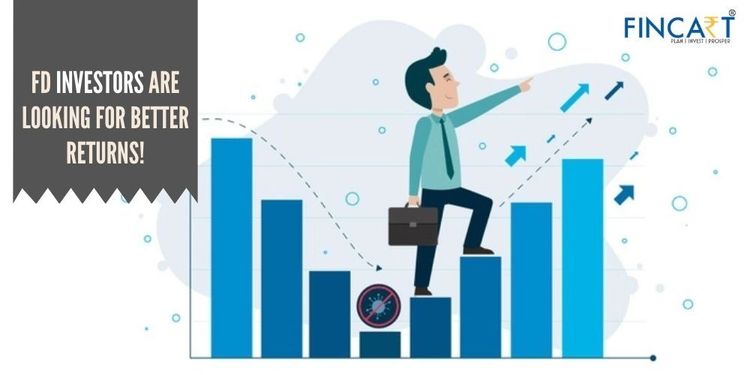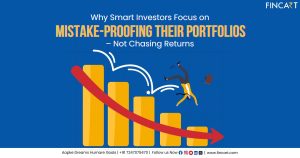Table of Contents
ToggleBe it any kind of investment, in the end, investors hope for good returns from their investments. Earlier there were times when Fixed Deposits, commonly known as FD was at the top list for investments. You must have heard your grandparents or parents of the 90s talking about opening FDs.
Yes! FD was a trend back in those days. It was a risk-free investment arena. Conservative or Retirees who lived on interest income were in huge favor of Fixed Deposits. There was a time when FD doubled in 6 years, giving an average of 12% returns. People used to invest for like 10 years. Now, For example, if your grandparents had invested 3 lakhs when the returns were 12% for 10 years, the maturity value of that investment consultant would have been 9. 78 lakhs.
Unfortunately, those days and such interest from FDs are long gone now.
CHALLENGES AHEAD THE ROAD WITH FD
As India progressed, the FD rates started going down. Now the bank FD rates are anywhere between 4.5%-5.5%. Consider the above antidote, where your grandparents would have got 9.78 lakhs. But if they invested in advanced India, now this amount would only have been somewhere around 4.69 lakhs, considering 4.5%.
This drastic fall in FD rates has led FD investors to look for better returns. Who would want their hard-earned money to get a minimal return, when now there are ample options to get good returns! Conservative investors and retirees who live on interest income have been badly hurt with their investments.
THE POSSIBLE OPTIONS DOWN THE LINE
Given the fact that these FD investors consider the safety of their capital as their prime objective. Hence, a few possible options are mentioned below-
Debt Mutual Fund:
The return on debt mutual fund has been good until a year back. These funds are invested in fixed-income instruments, be it government bonds, corporate debt securities, or money market instruments. Considering the evolving market dynamics, consulting with a skilled mutual fund investment planner can provide valuable insights into optimizing your investment strategy. Going forward the returns cast from Debt Mutual Funds may not far out beat FD returns.
Guaranteed Income Plan:
The Life Insurance companies have come up with a few guaranteed income plans that guarantee tax-free returns between 5.50%-6.25%. This return comes in the form of an annuity, deferred annuity, and lumpsum maturity payments.
Dynamic Asset Allocation:
This Mutual Fund scheme has equity+debt mutual funds. The equity portion is dynamically managed. When the market is high, the equity portion is kept at a low level and when the stock market goes down then the equity exposure is increased. This is mainly formula-driven.
Having said that, this is not a comparable product to the earlier options, because it carries market risk. The market risk of this product reduces with an increased time horizon of investment.
Also Read: Importance of Asset Allocation in Retirement Portfolios
Bottom Line:
Someone who is completely risk-averse and cannot digest the market volatility can choose the Guaranteed Income Plan. Whereas, someone who is looking to generate 8%-9% and is okay with market volatility should opt for a Dynamic Asset Allocation Product (mutual funds).
Making a meaningful impact on the lives of Indians across the globe with sound & profitable investments. That’s the FINCART dream!




